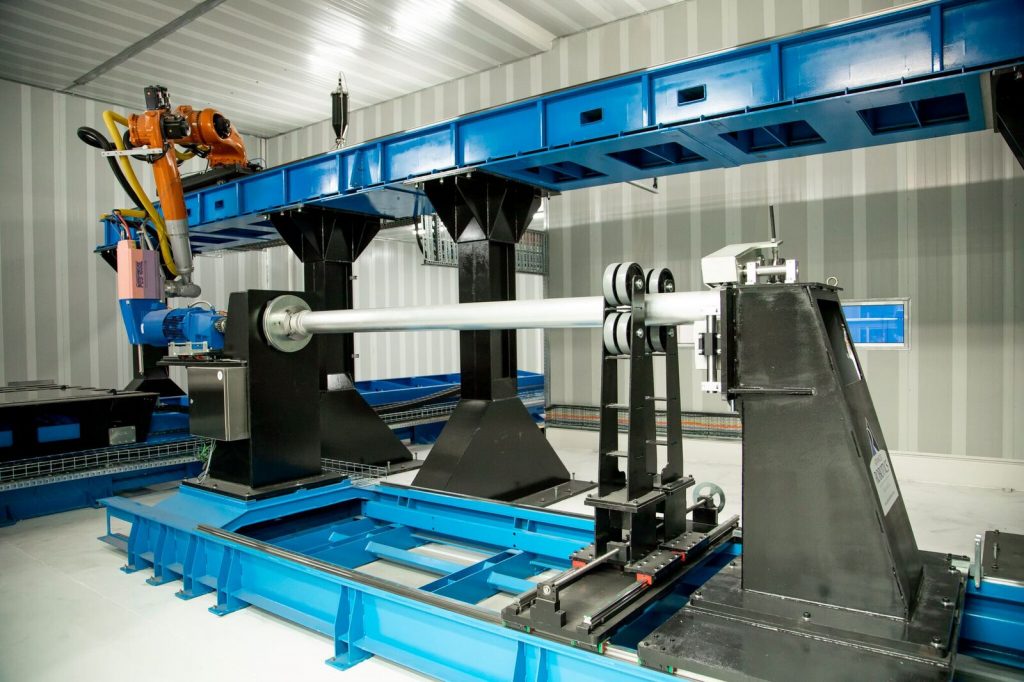Aerospace manufacturer Boeing has partnered with Titomic, the Melbourne-based firm behind the Titomic Kinetic Fusion (TKF) 3D printing process, to further advance additive manufacturing in the space sector.
Together, the companies will investigate the use of sustainable titanium powders for the 3D printing of parts for space systems.
Titomic was recently awarded a $2.325 million Modern Manufacturing Initiative grant by the Australian government, which it will use to research and commercialize components for space vehicles and satellites using a local titanium mineral resource.
Paul Watson, Boeing Defence Australia’s Director of Aerospace Engineering and Production, explains, “Under the agreement, Boeing will provide the designs and engineering expertise to enable Titomic to demonstrate its cutting-edge kinetic fusion additive manufacturing technology on the production of space parts, initially for JP9102.”

Titomic Kinetic Fusion
Titomic’s TKF process is a form of cold spray additive manufacturing. The approach involves spraying a fine metal powder onto a solid substrate below, much like you’d spray paint onto a graffiti wall. The substrate can either be a build platform or an existing metal part.
It’s named cold spray because the technique doesn’t rely on lasers or any other heat-based energy sources and leverages kinetic energy instead. Metal powder is jetted out using a high-velocity compressed gas stream, which gives the material enough energy to deform and bond to the solid part below, forming additional layers.
Titomic’s proprietary TKF technology, specifically, is characterized by its high-pressure nature. This qualifies the process for high-performance applications in industries such as aerospace and defense, where the firm is an established operator and registered research provider.
Just last year, Titomic signed a partnership with machine tool manufacturer Repkon to jointly build a new defense-focused 3D printing production facility in Australia. The factory will be used to fabricate Repkon-designed weapons system barrels using the company’s additive technology.
More recently, the firm also expanded its presence in Europe with the acquisition of rival Netherlands-based cold spray technology company Dycomet Europe. As well as providing a new base in Europe, the deal also offered an immediate source of revenue for Titomic, seeing as Dycomet Europe brought with it a healthy pipeline of customer orders across the continent.

Sustainable titanium 3D printing for space
Titanium is defined by its high strength-to-weight ratio and excellent corrosion resistance, making it one of the most commonly used materials in aerospace. In the military, aircraft such as the F-22 and UH-60 Black Hawk rely on large quantities of titanium, while the space sector is using increasing amounts of the metal for rocket engines, pressure vessels, and structural parts.
According to Boeing and Titomic, titanium is readily available in Australia and is considered to be more environmentally sustainable when compared to other similar alternatives. The use of the metal can also help enable significant time and cost savings by eliminating the need for vast amounts of raw mineral processing.
Watson adds, “The partnership will demonstrate that additive manufacturing technology, or large-scale 3D printing, using green titanium produces highly resilient, lightweight components that have broad-ranging application across the space sector.”
The collaboration is also expected to position Titomic as a leading supplier within Australia’s space manufacturing sector. Herbert Koeck, CEO of Titomic, believes that the companies will be able to “redefine the production process for space vehicles and parts”, ultimately bolstering Australia’s standing on the global stage.
Subscribe to the 3D Printing Industry newsletter for the latest news in additive manufacturing. You can also stay connected by following us on Twitter, liking us on Facebook, and tuning into the 3D Printing Industry YouTube Channel.
Looking for a career in additive manufacturing? Visit 3D Printing Jobs for a selection of roles in the industry.
Featured image shows a 9 x 3 x 1.5m Titomic Kinetic Fusion 3D printer. Photo via Titomic.



